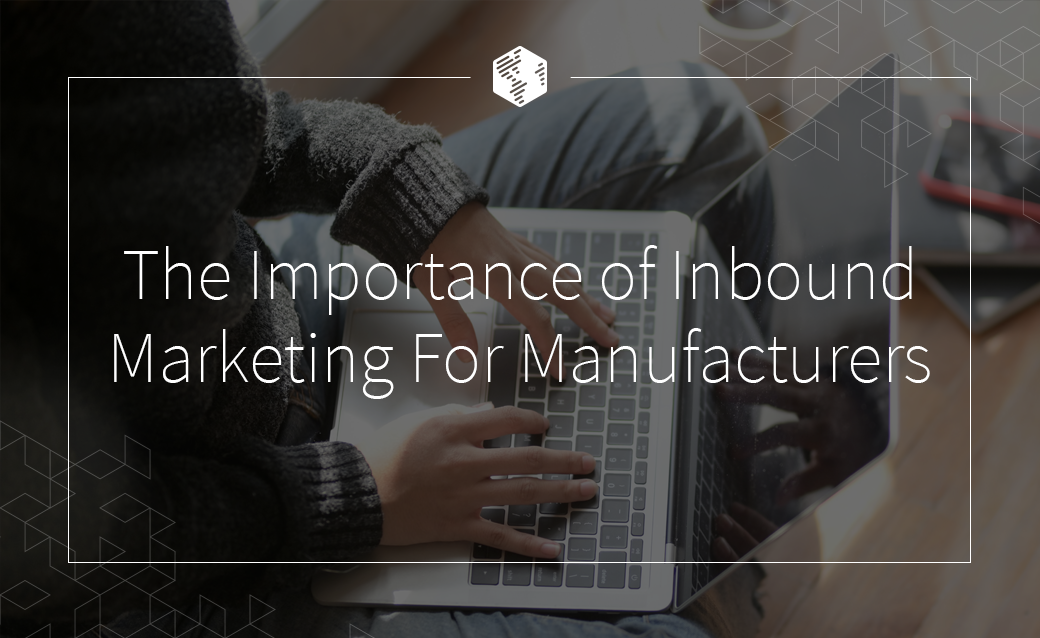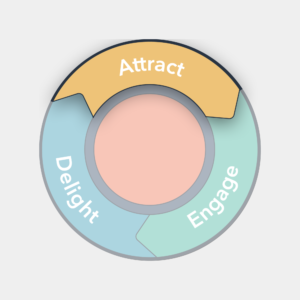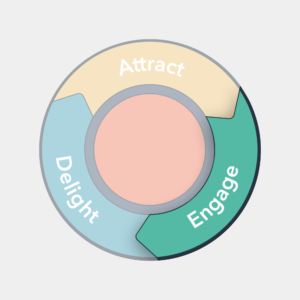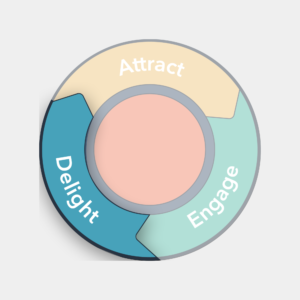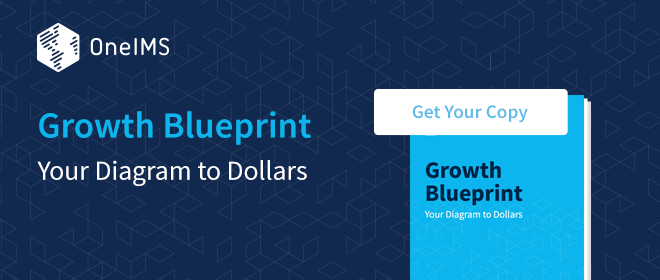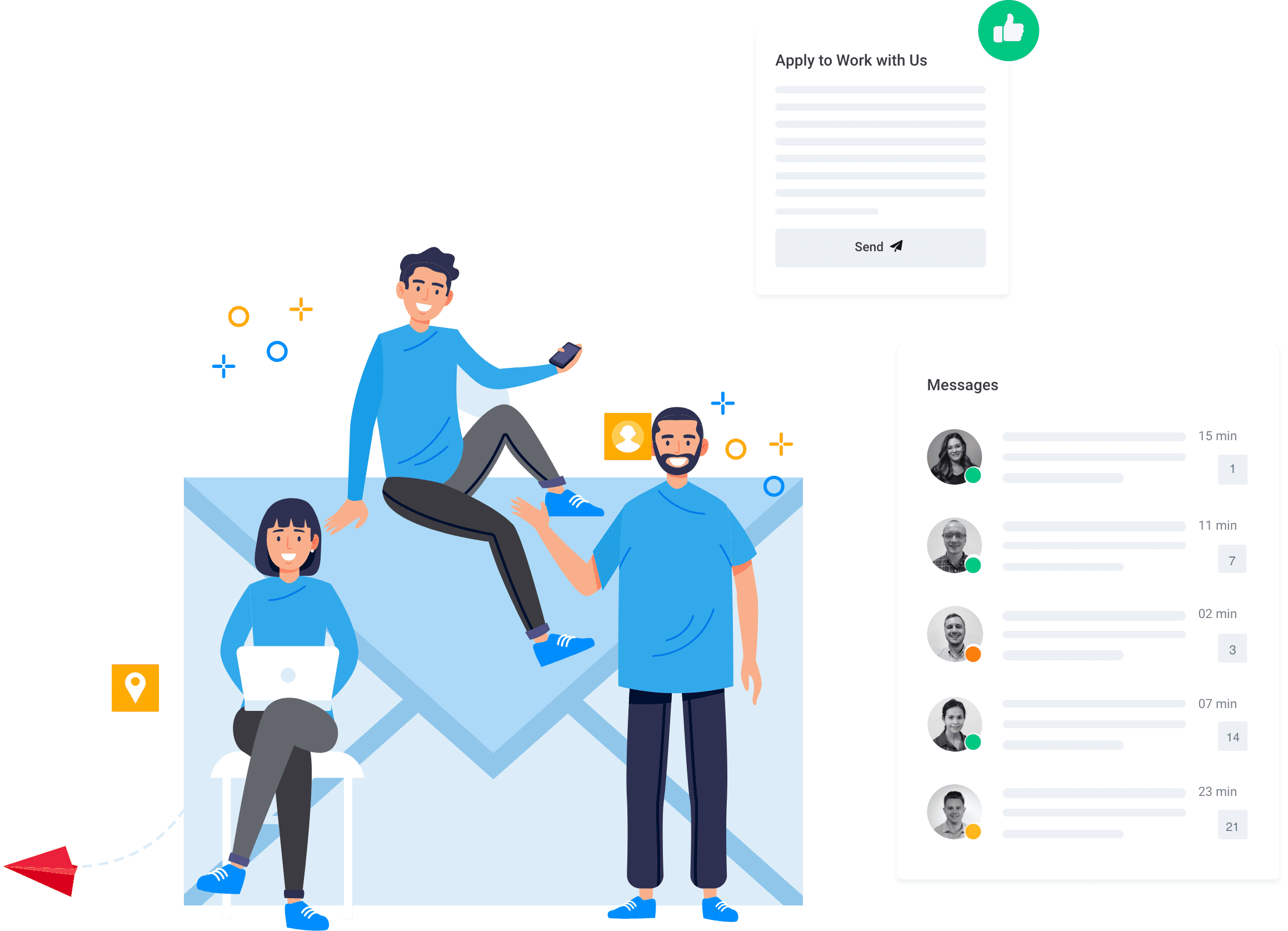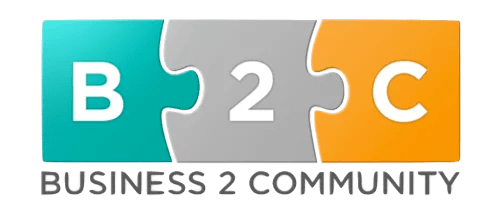Over the past two decades, the B2B landscape has gone through so many changes. Among all the technologies that disrupted the industry, the internet is the one with the most profound impact. All those proven tactics to reach buyers, including direct mail, TV commercials, or print advertising, are not efficient. Not as they used to be.
Reaching B2B buyers online has become more critical than ever. The new-age buyers do their research online before making a purchasing decision. Manufacturers need to change their marketing game to extend their reach and reach clients who’ve moved online.
You need a team of experts with years-long experience in helping companies of all sizes in the manufacturing industries build a better online presence and increase revenue by positioning them to capture more inbound leads.
Traditional Marketing Techniques Can’t Leverage New Opportunities
Why would you change something if it provides results? Small to medium-sized manufacturers have proven marketing strategies that consistently delivered results year after year. But the market has considerably improved. The internet and mobile technologies have enabled us to look up any information that interests us in a matter of seconds.
Clients no longer need to visit trade shows or go through ad prints to make a list of potential manufacturing partners. A simple query, “the best manufacturer near me” in search engines such as Google or Bing, is all they need. In fact, according to Google’s consumer insights report, 90% of B2B buyers use online search engines when making a purchasing decision.
What does it mean? It means that, while proven marketing strategies still work, manufacturers are consistently missing out on the new opportunities to capture new leads. So, the goal is to build a digital sales funnel from scratch and position your business to become more competitive.

Inbound Marketing for Manufacturers
Manufacturers often use marketing strategies rooted in the best outbound marketing practices. While pushing messages to a broad audience can be useful to some extent, inbound marketing can help you change your marketing game completely. Instead of pursuing potential customers who don’t even have the buying intent, it will allow you to attract inbound leads with the intention to buy.
Inbound marketing achieves this by reinventing marketing and shifting the best practices to the online world. More importantly, inbound marketing decisions are not based on experience and hunches. All marketing actions are data-driven and a result of thorough research. The quick overview of inbound marketing goes as follows:
- It generates high-quality traffic and inbound leads
- It offers prospects educational material
- It increases brand reach, visibility, and awareness
- It provides actionable information to marketing and sales teams
- It increases trust and credibility
From a Buyer Persona to a Captured Sale
Who are your ideal customers? Where do they like to spend time online? What are their pain points, needs, preferences? Every inbound marketing strategy is laid on the foundations of up-to-date information. And the answers to these questions will guide your decision to deliver a custom-tailored inbound marketing strategy for your firm.
A buyer persona will help you get insight into your ideal buyer’s world. Understanding your customers allows you to cater to their needs, attract them to your website, and interest them in your products. This information will help you strengthen marketing initiatives, making them more effective while minimizing your marketing expenses.
Then there is the buyer journey. When you push your print-outs and launch a TV ad campaign, you offer the same ad to all buyers. But not all of them are at the same stage of the buyer journey. These stages include:
- Acknowledging that there is a problem
- Researching options that can potentially solve the problem
- Deciding which of the solutions on the market is the best to invest in
Inbound marketing will enable you to serve relevant content to customers and for every stage of the sales funnel.
Streamline the Decision-Making Process for Your Target Customers
Instead of directly advertising to them, inbound marketing allows you to position yourself as a business with authority in your niche. Someone who knows how things work and what is the best course of action to take.
What you need is a team of professional digital marketers who can research your buyer journey and come up with a strategy that will turn your online presence into a primary source of all prospect’s answers. When you become the go-to source of information to your target customers, you will first come to their mind whatever the buyer journey stage they are in.
And this is what sets inbound marketing apart from outbound marketing. When you put your marketing resources into resolving customers’ pain points and giving them the information they need to make a good decision, people who visit your website are going to be the people who are ready to buy. The aftermath:
- Increased brand awareness
- Improved inbound leads generation
- Established trust between you and your customers
- Appear as an expert in the industry
- Ability to direct the customers next action
- Set the new buying standards
It All Boils Down to Attract, Engage, Delight
All inbound marketing strategies can be put into three categories if we use their goals as the filtering criteria. No matter the channel and type of content, its purpose will either classify it as an item of the Attract, Engage, or Delight category. Here is what a broad scope inbound marketing strategy needs to be effective.
Attracting Strategies
The goal of attracting strategies is to bring as many prospects to your website as possible. To do this, you have to create and publish valuable content. To maximize your reach, you should publish the content on your blog, promote it on social media, and create special content offers for your email subscribers.
Engaging Strategies
The purpose of engaging strategies is to make the prospects interested in what you have to offer. You can do this by focusing on providing value. You can, for instance, standardize how customer service representatives talk to interested prospects and focus on the problems your product can solve instead of directly selling the product.
Delighting Strategies
Never neglect the power of delightful customer experiences. You should work towards building a helpful brand image. Tap into the power of customer feedback to learn what you can improve, and act on it. A happy customer is a returning customer, not to mention all that free word of mouth marketing that you will ensure if you appear supportive to your customer.
READ THIS: Marketing Plan for Manufacturing Company
How to Look for Help When Generating Inbound Leads?
Find a group of passionate digital marketers capable of delivering customized integrated marketing solutions to help you grow your business hands-free. Look for someone who has a refined inbound leads generation strategy to provide the most optimal results. They should use both time-intensive inbound strategies, such as Search Engine Optimization, and strategies that deliver instant results, such as Pay Per Click.
The best approach to inbound marketing for manufacturers encompasses different tactics and turns them into a powerful inbound lead generation machine.
Search Engine Optimization
The key is to identify keywords frequently used by your potential customers to fuel your inbound marketing strategy. Find keyword research results to make improvements on your official website and set it up for long-term success.
It’s important to comb through your entire online presence and use the keywords to optimize your existing content. The search engines can then easily pick it up and serve your site as a result of customers’ inquiries.
RELATED: Best Digital Marketing Strategies for Manufacturers
Paid Media Management
Paid Media Management is beneficial when you want to achieve immediate results. Once you identify where your ideal customers prefer to spend their time online, you can devise a custom-tailored paid media marketing strategy.
Whether it’s a paid social, paid search, or display and remarketing strategy, you should monitor the developments in real-time and make changes to get the biggest bang for your buck.
Organic Social Media Marketing
Half of the planet is on social media platforms. You can use this to your own advantage, reach more people, and build a community around your brand to communicate with. Social media platforms will help you fuel your other digital marketing efforts and bring more traffic to your website.
By putting surveys, content sharing, and social media analysis to smart use, you will be able to focus your marketing efforts on the right places and in the right way. As a result, more inbound leads will be heading to your website.
Digital PR and Content Promotion
Digital PR is very similar to traditional PR. But instead of using your media contacts to promote your products and brand, digital PR focuses on getting your content in front of a wide and relevant online audience.
You should target relevant blogs and forums where your content can bring value to the readers. By reaching people in need and offering them a solution, you will bring referral traffic to your website and increase inbound lead generation.
Content Creation
If you don’t have an in-house person who can write engaging content, you should definitely find a team of capable content writers. It would be best if you used the results of keyword research to optimize your existing content and create something new.
The best content strategy delivers high-quality, engaging content you can leverage to increase brand visibility and generate high-quality leads.
READ THIS: 8 Ways to Leverage HubSpot for B2B Lead Generation
Let The Data Fuel All Your Marketing Decisions
Data is the most valuable asset for any marketer. You can leverage any of the marketing platforms to identify a correlation between your marketing efforts and sales results. This will help you identify the goals of your inbound marketing efforts and optimize marketing/sales alignment for better results.
This is an ongoing process that requires a lot of repetitive work. A reliable automation solution will help you enjoy the benefits of marketing automation and sales enablement completely hands-free.
Marketing Automation
Via audience segmentation and lead scoring, you will be able to identify the stage in the buyer journey for each lead that your marketing campaign generates. This data makes drip campaigns highly efficient and less intrusive. Ultimately, it will enable you to offer the right content to relevant leads.
Conversion Rate Optimization
While marketing campaigns have to provide results, they also have to be cost-efficient so that you can consistently benefit from them. This is why one of the primary goals is to optimize conversion rates. To do this, you can create different landing pages and employ A/B tests to identify and use only the ones with high conversion rate potential.
Sales Enablement
Enabling the sales team with valuable information when and where sales reps need it is vital to capturing sales. Thanks to sales workflow optimization and automation solutions, and smart use of CRM software, your sales team will be able to capture more sales than ever before.
Using a CRM platform with advanced features is imperative here. It will allow you to automate outreach and follow-ups, and get insight into powerful reports, customer purchase, and conversation history.
The best thing about inbound marketing for manufacturers is that it plays perfectly well along the proven marketing strategies manufacturers are already using. It only helps manufacturers unlock the full potential of their business and pursue valuable online marketing opportunities to capture inbound leads and increase revenue.


